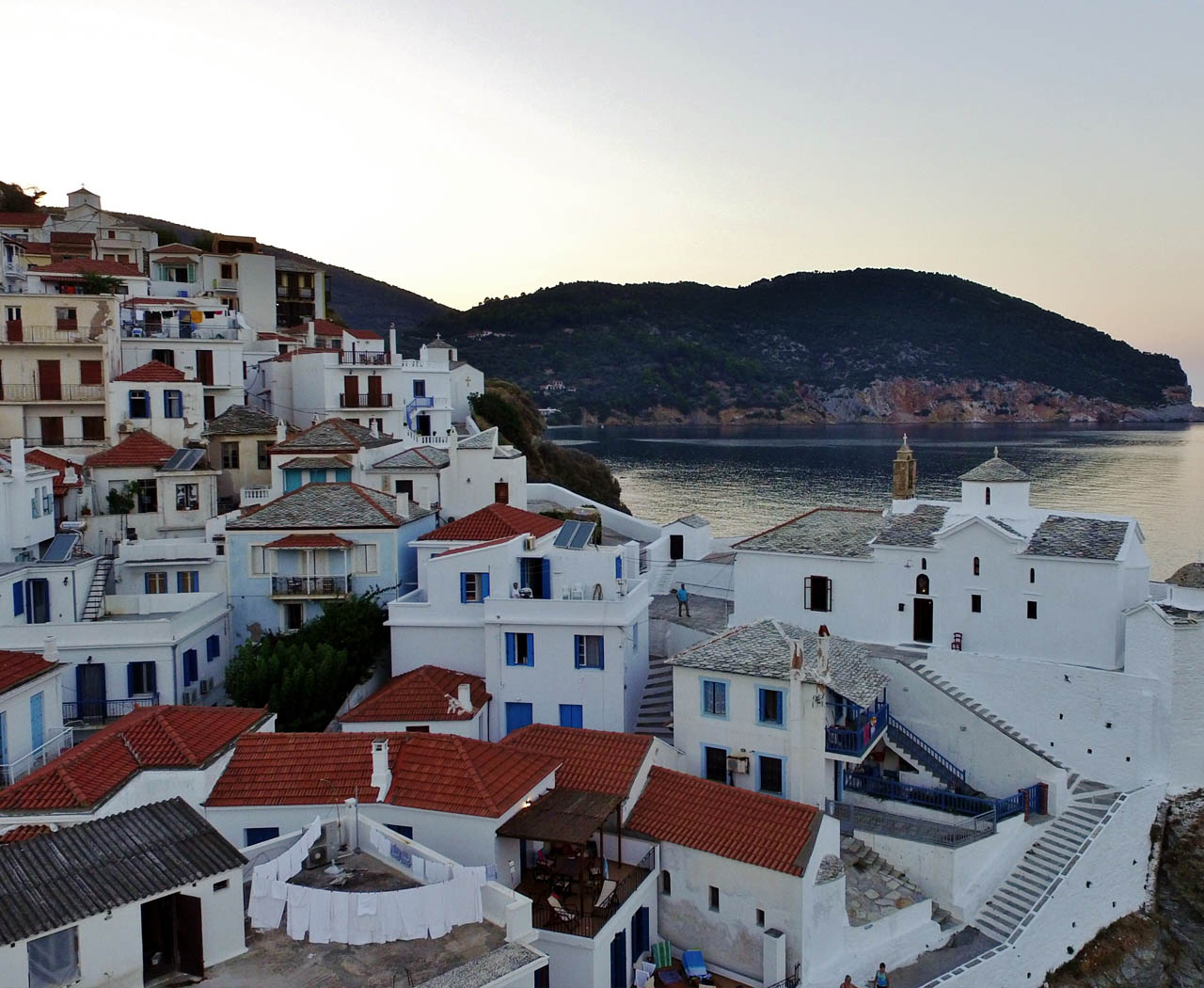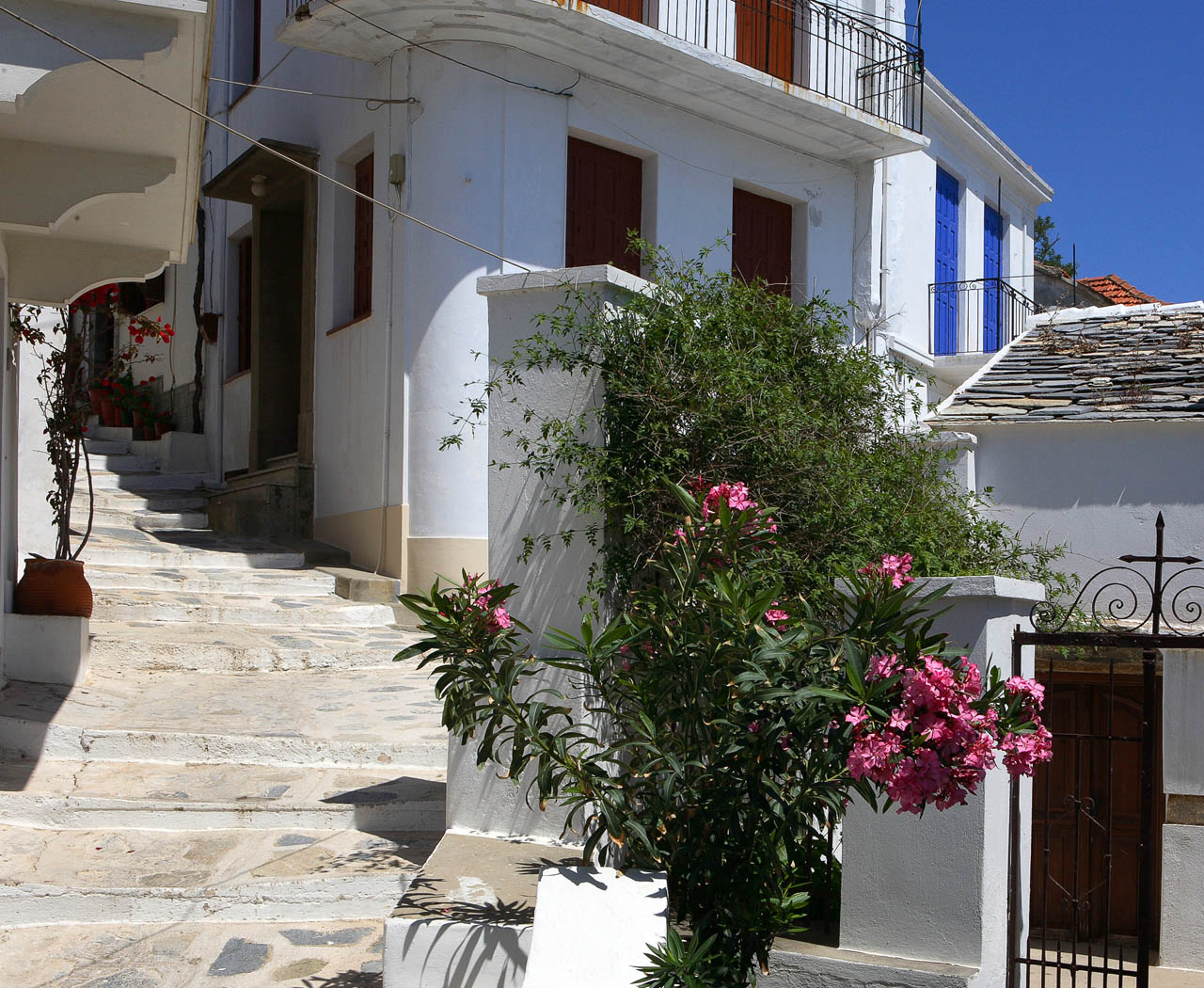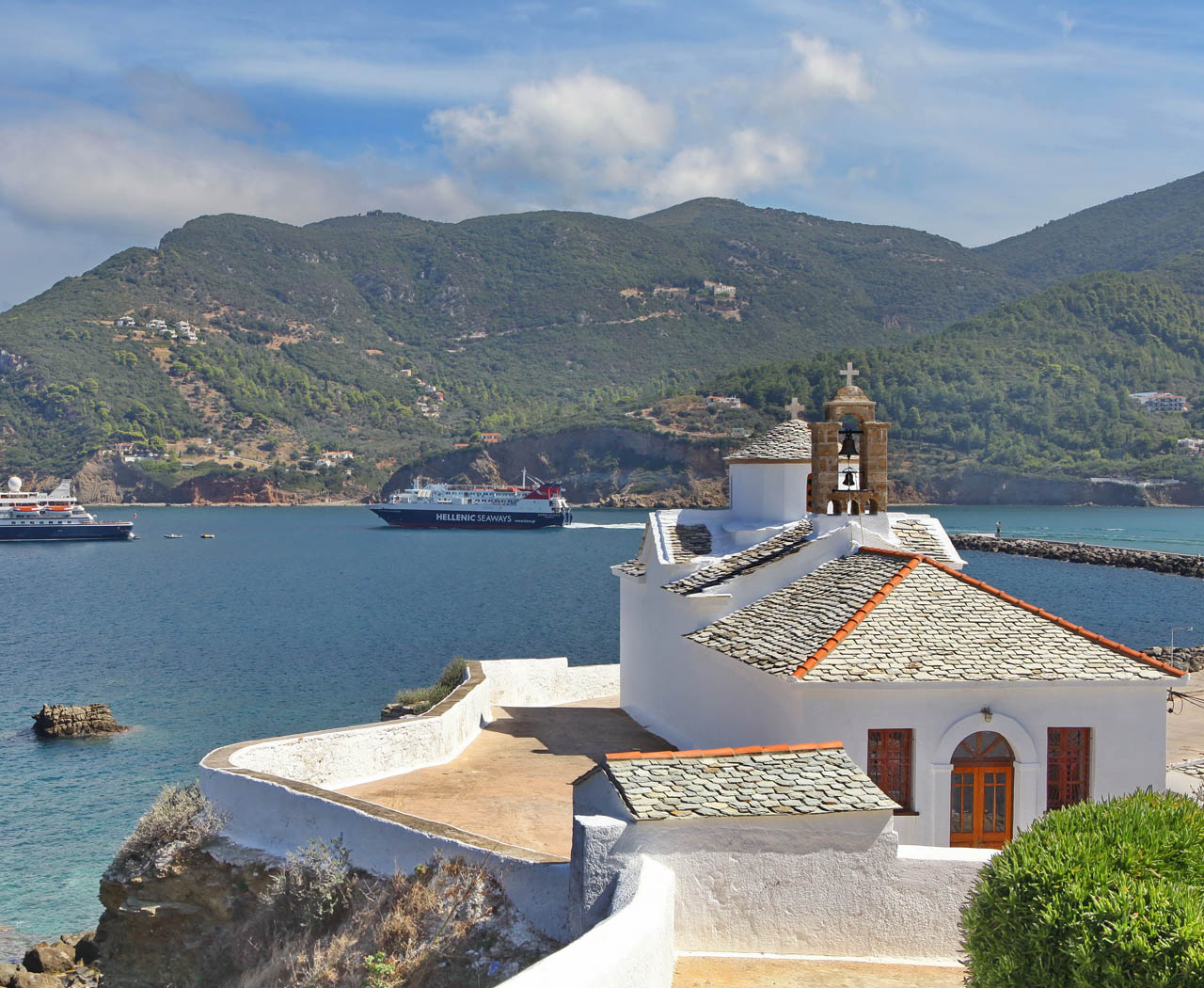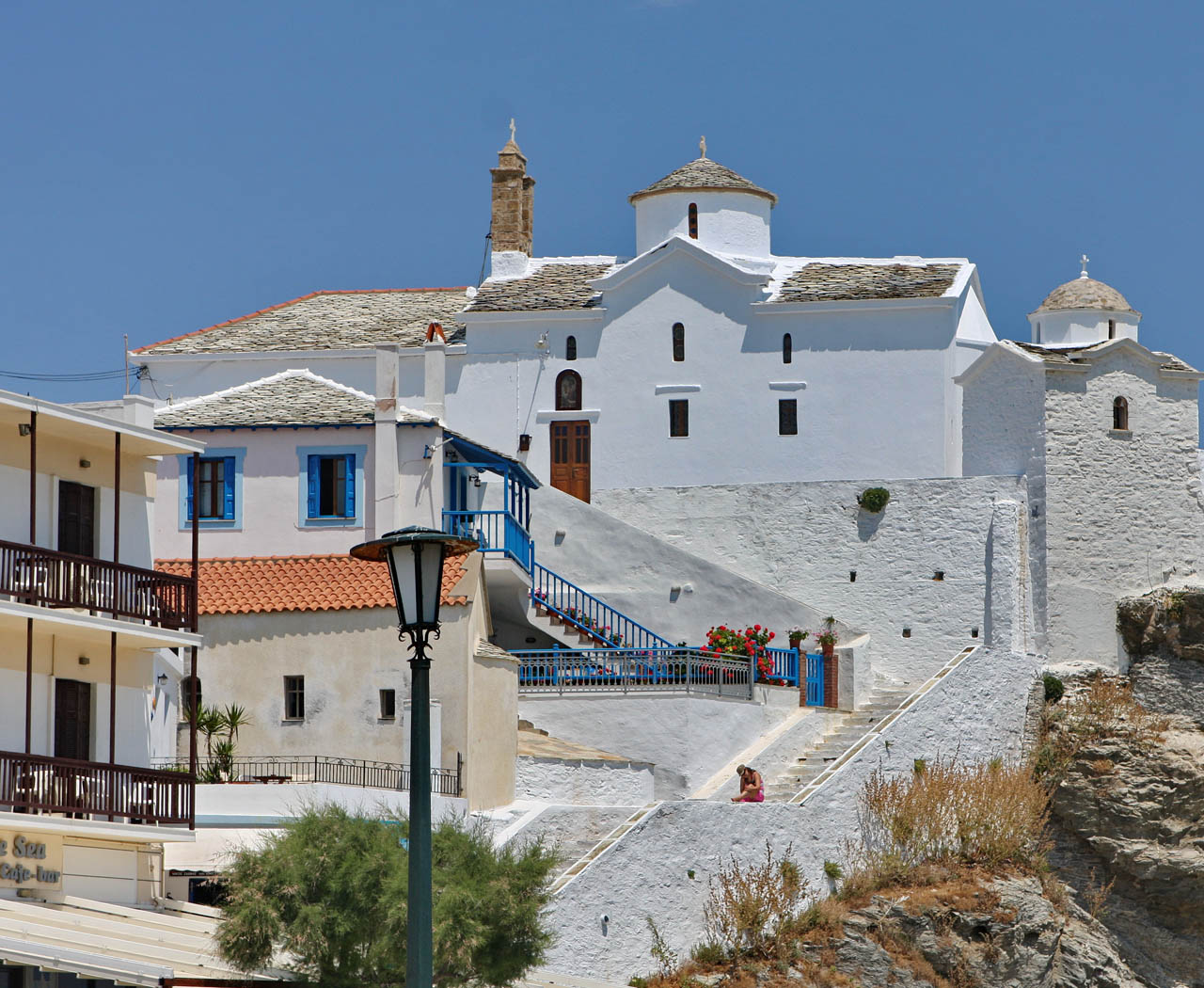Skopelos Chora (aka Skopelos town)
In the 16th century BC, also known as Chora, appears under the name of “Peparethos.” The town was established by the Cretans who arrived on the island, bringing with them expertise in olive cultivation and viticulture.
Skopelos Chora captivates every visitor with its imposing appearance and its picturesque alleys. It is no mere coincidence that most tourists speak of “love at first sight” upon seeing Skopelos town for the first time as their boat approaches the harbor. Skopelos is stunning in so many respects and gives you yet more ways to discover it.


A beautiful path starts from Pigadaki, above Skopelos Chora, and goes all the way up to the 13th century Venetian Castle founded by the Gyzi family. The remains of the Castle’s walls are still preserved today while their spectacular view will impress anyone who walks by. At the top of Kastro (Castle), you can visit the tavern of Mr. Yiorgos Xintaris, one of the last remaining original representatives of rebetiko music. Climbing down the cobblestones, you will meet many small churches and chapels. At the same time, the positive energy of Skopelos pervades the atmosphere.
The town of Skopelos is home to a variety of cultural sites, such as the house of the Greek author Pavlos Nirvanas next to the Three Holy Hierarchs Church (“Trion Ierarhon”); the Vakratsa Mansion; the Folklore Museum of Skopelos (Skopelos Chora downtown); and the archaeological site of the ancient healing center “Asclepieion” in Ambeliki (on the right side of the harbor).
A beautiful path starts from Pigadaki, above Skopelos Chora, and goes all the way up to the 13th century Venetian Castle founded by the Gyzi family. The remains of the Castle’s walls are still preserved today while their spectacular view will impress anyone who walks by. At the top of Kastro (Castle), you can visit the tavern of Mr. Yiorgos Xintaris, one of the last remaining original representatives of rebetiko music. Climbing down the cobblestones, you will meet many small churches and chapels. At the same time, the positive energy of Skopelos pervades the atmosphere.
The town of Skopelos is home to a variety of cultural sites, such as the house of the Greek author Pavlos Nirvanas next to the Three Holy Hierarchs Church (“Trion Ierarhon”); the Vakratsa Mansion; the Folklore Museum of Skopelos (Skopelos Chora downtown); and the archaeological site of the ancient healing center “Asclepieion” in Ambeliki (on the right side of the harbor).

Another magnificent journey inside the alleys of Skopelos Chora includes climbing up from Panayitsa of Pyrgos Church (Virgin Mary of the Tower) – on the edge of Skopelos’s old port – to the Venetian Castle. This journey will make you feel like you are traveling back in time!
No matter which routes you choose, Panayitsa of Pyrgos is one that will capture the spotlight. Built on a rock at the entrance to the port, the beautiful, picturesque church is one of the first, most spectacular sights to be etched in the heart and mind of the tourist upon arrival. Panayitsa of Pyrgos is a four-column, cross-in-square domed church. Its iconostasis dates to the 17th century and depicts scenes from the Old and New Testaments decorated with carved flowers and birds surrounding the frames of the icons.


It is worth noting that the architecture of Skopelos town was one of the key elements that led to its designation as a traditional settlement. Skopelos Chora integrates a mixture of architectural styles. The two trademarks of the settlement buildings are the slate roofs of the houses and various churches and their neoclassical features.
In addition, the street layout of the town of Skopelos is uniquely charming, from the way in which it adapts differences in elevation to its few arched galleries and the town’s amphitheatrical architecture, offering as much view, sunlight, and wind as possible.
It is worth noting that the architecture of Skopelos town was one of the key elements that led to its designation as a traditional settlement. Skopelos Chora integrates a mixture of architectural styles. The two trademarks of the settlement buildings are the slate roofs of the houses and various churches and their neoclassical features.
In addition, the street layout of the town of Skopelos is uniquely charming, from the way in which it adapts differences in elevation to its few arched galleries and the town’s amphitheatrical architecture, offering as much view, sunlight, and wind as possible.



